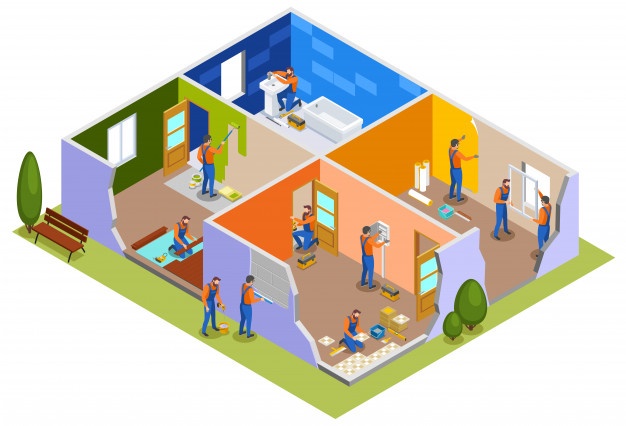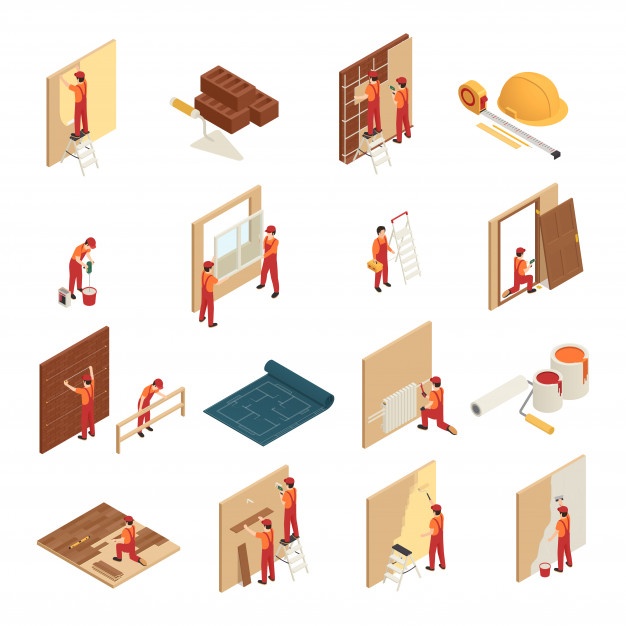Plasterer Services
Are you looking for reliable and affordable plasterer services in London and the surrounding areas?
Do you need professional plasterer services to straighten a wall, or do you need someone for a significant home renovation project? With My Direct Property Services, you will be able to hire a highly-skilled plasterer in London at a very reasonable price.
Londoners know they can always trust us with their home improvement projects when it comes to plastering services. My Direct Property Services has years of experience as a service provider. We will complete any repairs and improvements your property needs according to your specific requirements.
Plastering services for homes and businesses across London and the the surrounding areas
My Direct Property Services provides Painter and Decorator services across London and the surrounding counties. So if you are looking for the best Plastering services near me, look no further than My Direct Property Services.
Homeowners, tenants, estate agents, landlords, and businesses depend upon our plastering services.
Plastering services
We can help you with anything related to either internal or external rendering, including:
Plastering FAQ
Generally, it will take around 2-5 days for plaster to dry out. There are a few factors that will affect the drying time of your plastered walls.
First, the thickness of the plaster will affect the time it takes to dry out. If any areas require additional work, such as a void, a large crack, or a gap that needs filling, a base coat or bonding plaster may be required before skimming.
Certain areas may be thicker than others and require more time for the plaster to dry out thoroughly. If there has been significant filling, it could take as long as two weeks for the plaster to be thoroughly dry and ready for painting and decorating.
Another factor that will affect the drying time for your plastering work is the room temperature and ventilation. Turning the heating on to speed up the drying process can be tempting but is not recommended.
Excessive heat will cause the plaster to dry too quickly, which may result in cracking or hazing. The best condition for allowing your newly plastered walls/ceiling to dry is to provide some ventilation by slightly opening a couple of windows.
You can put the heating on; however, we recommend keeping this at a low temperature for several days after the plastering to help the drying process whilst avoiding the plaster cracking.
When your plastering is completed, it will be a rich brown because the plaster will be fresh and full of moisture.
As the plaster dries out, it will become patchy, a mixture of brown and pink. Once dry, the plaster will be pale pink, and all brown patches will have disappeared. Certain areas of the plastering may take longer than others to dry out.
Examples could include corners, places where the plaster may have been thickly applied, and areas that required additional filling. Your plastering is completely dry once all brown patches have dried out and the surface is a consistent pale pink colour.
Please do not turn the heating on to try and accelerate the drying process of your plastering. It is also not a good idea to bring in additional heaters or dehumidifiers to dry the plaster out quickly.
Unfortunately, it is just a matter of being patient and allowing the plaster to naturally dry out at its own speed.
Open a couple of windows slightly to provide light ventilation. You can also put the heating on but only at a low temperature.
If you try and rush the process with excessive heat, you will ruin the results and finish your newly plastered surface. When the plaster dries out too rapidly, it causes cracks or haze cracking.
Ensure your plaster is thoroughly dry before you start decorating. The plaster will take a minimum of 3-5 days to dry thoroughly and, in some cases, longer. Once dry, the plaster will be pale pink, and all brown patches will be gone.
It is possible to plaster over Artex; however, there are often some additional preparation steps required.
For the best result, it is best to take a look at the Artex so we can tell you what actions need to be taken and give you an accurate idea of timeframes and costs. We can also assess the Artex surface for asbestos and make any recommendations for an asbestos survey.
When plastering over Artex, depending on the thickness and design, it may be necessary to scrape back the Artex to reduce the peaks and then coat the surface with PVA before skimming with plaster. Treating the Artex can be a messy process.
In some cases, we may choose an alternative and instead fill out the artexed surface by applying a bonding coat to flatten it before skimming it. The option we take will be dependent upon the thickness, the size of the area to be covered, and whether or not there is any coving in place.
Our priority will be to assist you in removing your Artex in the most cost-effective, with the least amount of mess and disruption.
Yes, we complete plastering works of all types from ceilings to walls, plaster repairs, skimming, plasterboarding, overboarding, plastering whole rooms and skimming house extensions, newly built houses with many rooms, plastering renovation properties. No job is too big or too small.
We can help erect partition walls. A partition wall or stud wall is a non-load-bearing wall that can divide up an area or space.
When erecting a stud wall, we can help construct the studs, which is the timber frame that provides the structure, plasterboarding, and then skimming the surface.
Overboarding is applying new plasterboard over the top of the existing plastered surface instead of the new plasterboard being screwed directly to the ceiling joists.
Essentially it is like applying a new skin over the top of the old one. In the case of an artexed or lath and plaster ceiling, new plasterboard would be installed over the top of the existing ceiling. When overboarding, it is essential to locate and fix the original ceiling joists.
Sometimes small cracks and hazes may be seen in new plastering as it dries due to the materials shrinking. Plaster cracking can be more evident if plaster has been dried out too quickly, maybe if the heating has been put on high. Hairline cracks can occur in places and are fairly normal with temperature changes as everything does expand in higher temperatures.
Skimming means applying a thin coat of finishing plaster to an existing wall or ceiling or new plasterboards. Skimming creates a smooth finish to walls and ceilings before painting or using wallpaper.
Dry lining or drywalling is an alternative to using wet plaster. Dry lining a wall means attaching plasterboard to the wall and filling the joints using jointing tape and compound. In our experience, a far superior finish is achieved when a professional plasterer skims the plasterboard. My-DPS Plasterers can assist with dry lining and skimming the walls and ceilings of your property. Please get in touch with us for advice on your plastering project and a free n obligation quote.
There are several things you can do in advance of us arriving to plaster your room. Where possible, please remove furniture and accessories such as pictures, mirrors, and ornaments. If a piece of furniture is too large or heavy, we will cover it for protection and work around it. We will cover carpets and flooring with our dust sheets when we arrive and before any work commences. We will need access to water and occasionally electricity to carry out our work. We may need to access other rooms to fetch the water. We will bring additional dust sheets to cover flooring in any rooms we need to obtain water.
If there are any existing wall coverings in places like wallpaper or flaky paint, these can be removed. We are happy to complete this work for you; however, if you can do this work before our arrival, this will help save time and keep costs down. If you would like us to complete any such preparation work, please make us aware of this when discussing your plastering job and providing our quotation.
When we are plastering, we need to cover light fixtures to protect them. We also need to remove all sockets and light switch plates. In most cases, we will do this type of preparation ourselves on arrival. Once we have finished plastering, it is best to be left uninstalled for a short period to allow the plaster to dry. If you would like us to return to reinstall them a few days after finishing work, please let us know at the quotation stage.
It would be helpful to keep pets and children in another room whilst we are working for safety reasons and avoid plaster and dust going to unprotected areas of your property.
We will bring dust sheets and plastic with us to protect your flooring and woodwork and cover any furniture we cannot remove.
The time it takes to plaster a room depends on what is required and the size of the room. We can give you an estimated completion time when we calculate the job and provide a quote.
As well as plastering we also offer a painting and decorating service. We are able to quote you the plastering price with or without painting and decorating services.
Skimming over lath and plaster is not recommended. It could cause the original plaster to pull away from the laths, which would be very messy. So if you have lath and plaster, there are two options:
- Remove the lath and plaster completely and start again, generally with plasterboard.
- Alternatively, we can plasterboard over the top of the existing lath and plaster skim to finish.
Removing lath and plaster can be messy, so people opt to plasterboard over it in most cases.
We use some of the highest quality materials to leave the best possible finish. If you have other plastering services you would like to discuss, then contact us.
Why use My-DPS plastering services?
Qualified Team
40+ Years Experience
Affordable Pricing
Professional Service
Wide Range of Services
Property Experts


